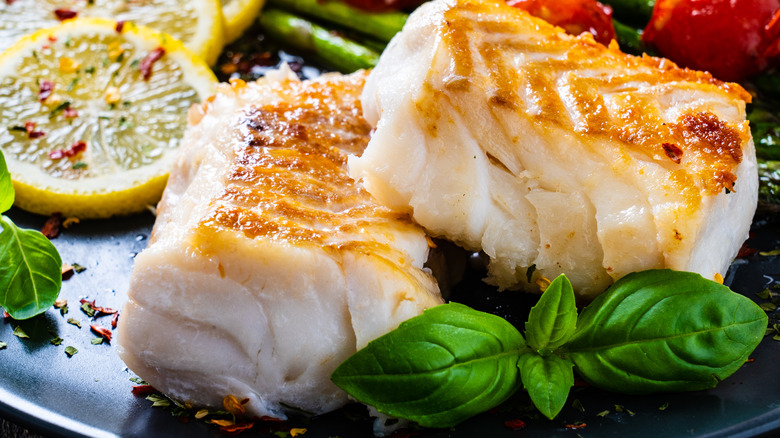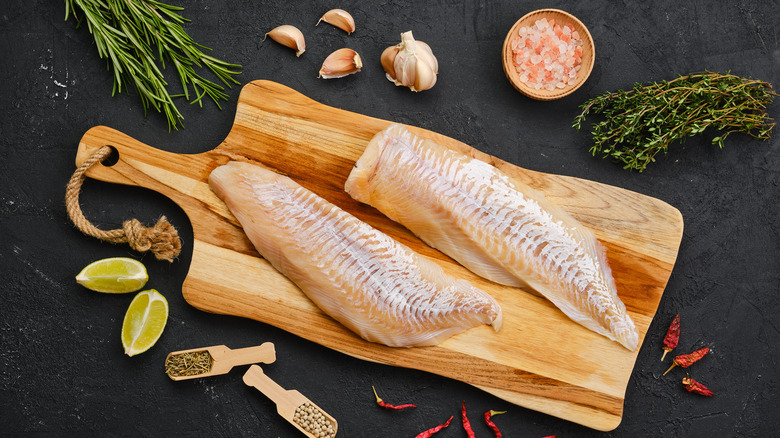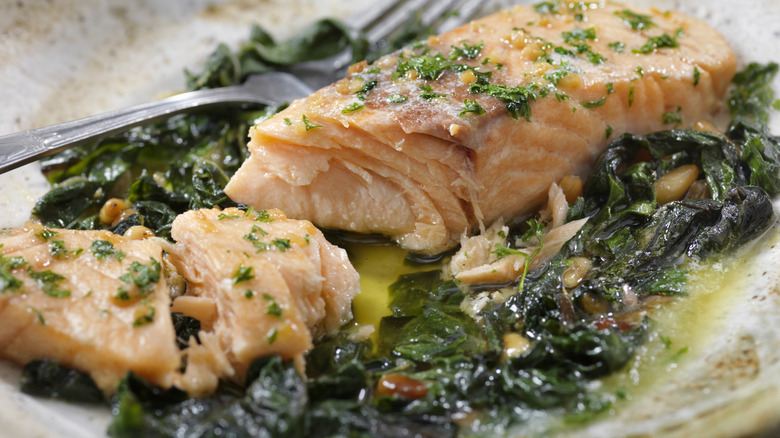Rinse Frozen Fish Under Cold Water For Better Baking
Between preparing breakfast, packing lunch, and running out the door for work, sometimes we simply forget to defrost our dinner ingredients. Then, when we get home at the end of the day, we have to figure out how to cook dinner straight from the freezer.
Luckily, there's no need to heat up another frozen pizza or order takeout; if you have the correct raw ingredients on hand, you can prepare them straight from the freezer. For example, frozen fish fillets can go directly from the freezer to the oven, allowing you to serve up a healthy dinner without waiting for anything to thaw. But before you put your fillets on the baking tray, you should rinse them off under cold water. Washing off the layer of ice crystals that coats the exterior of your frozen fish fillets will allow your fish to brown for a more delicious result, and will also prevent mushiness.
From the freezer to your plate
To bake fish fillets straight from the freezer, preheat your oven to 425 degrees Fahrenheit. Remove the frozen fish fillets from their packaging, and gently rinse them under cold water. Leaner types of fish, such as cod, tilapia, and haddock, are particularly well-suited for baking from frozen, primarily because of their lower moisture content. Pat the fillets dry with paper towels.
Line a baking tray with foil or a silicone baking mat, and place the fish on the tray. Bake for four to five minutes. Then, remove the tray from the oven and season the fillets with salt, pepper, lemon juice (which will also defend your kitchen against fish smells), and lemon zest. The fish won't be fully cooked yet, but the surface will be thawed enough for the seasonings to stick. If you have vegetable sides that are ready for the oven, season them and place them alongside the fish before returning the tray to the oven.
A key question when cooking fish from frozen is the amount of extra cooking time needed. Depending on the weight and thickness of the fillets, cooking them from frozen may take up to one and two-thirds times longer than cooking thawed or fresh fillets.
Poaching frozen fish fillets
Aside from baking, poaching is another method to cook frozen fish, particularly suitable for types like salmon. For example, if you have any court-bouillon in your kitchen leftover from seasoning shrimp cocktail, it makes for a fantastic poaching liquid. If not, you can create your own broth by filling a wide and deep sauté pan with water, and adding seasonings such as dried and fresh herbs, generous amounts of salt, and whole peppercorns. If you have small amounts of leftover celery, carrots, and onions, go ahead and add them into the pan for more flavor. You could also zest a lemon and add it to the poaching liquid, then cut it in half and add its juice to the pan.
Bring the poaching liquid to a gentle simmer, then slip in your frozen fish fillets and any additional vegetables you wish to cook. Simmer until the fish is cooked through, with the cooking time depending on the thickness of the fillets. Serve the fish and poached vegetables with melted butter and lemon juice for a healthy dinner.



